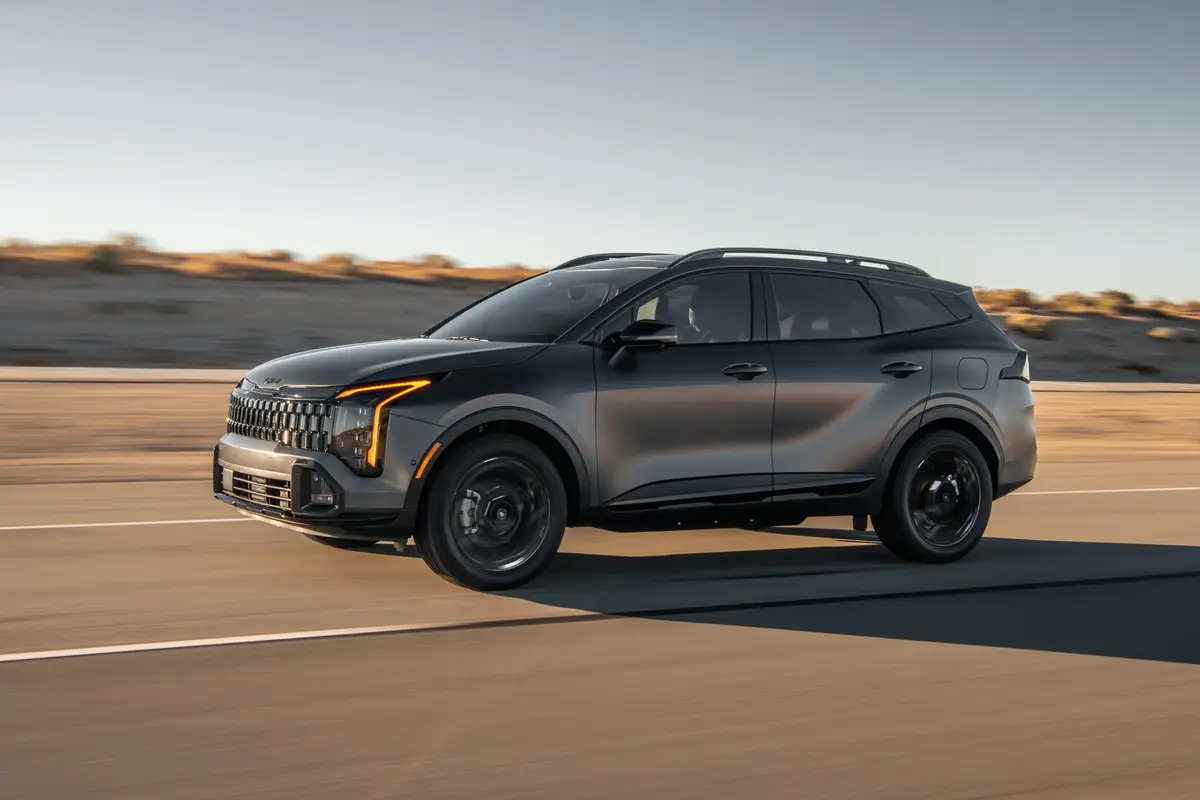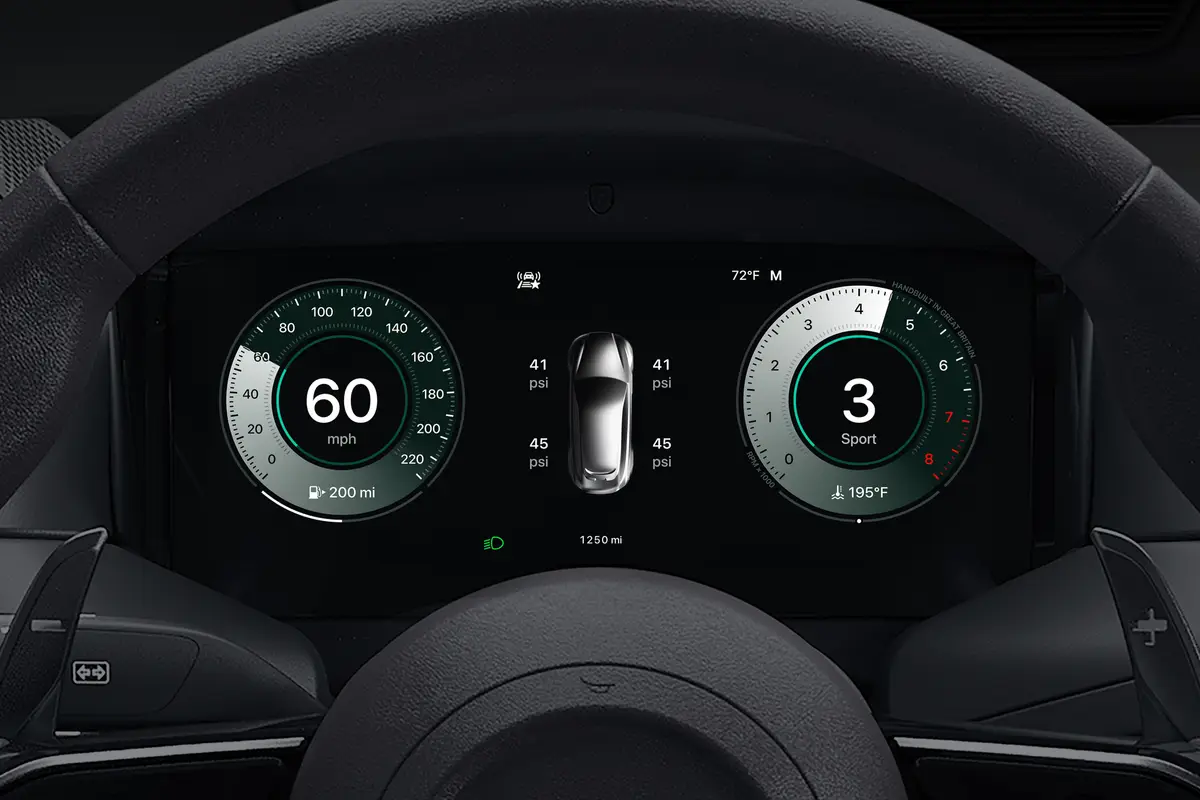chicagotribune.com's view
It looks like a midsize sport-utility vehicle.
It acts like a midsize sport-utility vehicle.
It just isn’t priced like most midsize sport-utility vehicles.
The reason is that it’s a Kia sport-utility vehicle, the new 2003 Sorento.
Because Kia isn’t a household name and because South Korean-built vehicles don’t have the reputation for reliability, durability and dependability of the more established brands, the automaker couldn’t price Sorento like Toyota did the Highlander, Nissan the Pathfinder, Jeep the Grand Cherokee, Chevy the TrailBlazer or . . . well, you get the picture.
So to get folks to consider the new kid on the block, Kia brings out a midsize Sorento sport-utility priced from $19,500 for the base two-wheel-drive LX version up to $24,100 for the top-of-the-line EX 4×4.
That, Kia boasts, means Sorento has a $5,000 to $7,000 advantage over its host of midsize rivals, some of which start where Sorento tops out with all the options.
Being the lowest-priced offering ensures nothing other than bragging rights, because one of the guiding principles in vehicle buying is the old saw: “You get what you pay for.”
In Sorento’s case, you get a lot of equipment for the money. At a time when some automakers are decontenting–removing equipment–to lower the sticker price, Sorento comes loaded.
But aside from price, there’s durability, reliability and dependability, which take time to prove or disprove.
In Kia’s favor, its Sedona minivan introduced for the ’02 model year won the government’s 5-star crash rating; was rated No. 1 for owner satisfaction among minivans in a consumer survey by AutoPacific, a marketing research firm; and was rated No. 1 for value in minivans by Strategic Vision, another marketing research firm.
Kia hopes that will make consumers feel that if a Kia minivan is good, a Kia sport-ute should be, too.
Peter Butterfield, executive vice president and chief executive of Kia Motors, says perhaps the media pays more attention to reputations than consumers do, and that despite the awards, price should attract at least 60,000 consumers into Sorento.
“If you never owned a new vehicle before, a $20,000 Kia with a 10-year/100,000-mile warranty offers great quality,” he said.
We tested the ’03 4WD EX, which is about the size of a Jeep Grand Cherokee and, in profile, resembles the Lexus RX300 and Mercedes-Benz ML.
Only time will prove its ability to remain parked in your driveway and not the dealership’s service bay, but the immediate impression is that if you removed the Kia badging, you’d be hard pressed to determine who built it and where.
And if your budget is limited, you’d be hard pressed not to check out a rather enjoyable sport-ute.
About the only telltale that this costs $5,000 to $7,000 less than the high-priced offerings is that the engine and transmission are a bit louder than the $30,000 machi nes when you press the pedal.
The 3.5-liter, 192-horsepower V-6 with 4-speed automatic, same combination in the Sedona minivan, could use more firewall insulation to keep noise from filtering into the cabin. It shouldn’t be a problem to correct that soon, considering Kia can use some of that $5,000 to $7,000 price advantage on soundproofing.
What Sorento lacks in quiet, it makes up for in pep. A spirited V-6, though too bad it isn’t more fuel efficient, with a rating of just 15 m.p.g. city/18 m.p.g. highway with 4WD.
Of course, 15/18 is more disappointing when the roads are dry than when they are full of snow or standing water.
The EX comes with two 4WD dial-up settings–a set-and-forget “4WD auto” to engage all four wheels automatically when the need arises and a “4WD low” when needed off-road.
Sorento is built on a truck platform. That means it rides and handles more like a truck than a car. And being the low-priced offering, there’s me body lean in corners and turns and the bumps in the road can be felt on occasion. If you want flatter cornering and more cushioned ride, you’ll have to choose one of those higher priced offerings.
Because Sorento is built off a truck platform, it’s possible to derive a pickup off it, said Michael Wilde, manager of product strategy for Kia.
And what vehicle have Kia dealers been asking for that Kia doesn’t offer now?
“A pickup truck,” Wilde said.
But we digress.
Sorento’s strength comes from attention to detail and features you don’t expect on the price leader, including a first-aid kit in the cargo hold side wall; a cargo net and tie-down hooks along the rear floor; a series of plastic-lined compartments under the floor; and split, folding rear seats to increase cargo capacity.
Of course, lots of SUVs have split, folding rear seats that lay flat once you remove the headrests. But Kia has holders built into the folded seats so the headrests don’t roll around the cabin once removed.
Also, there’s bottle/cupholders in each rear side door as well as dual cupholders that pop out of the back of the front console; a power plug in the back of the front console to serve rear-seat passengers; a coin holder in the dash; a button in the driver’s door to open the glass in the hatchlid (a button on the key fob does the same); a pull-out stowage compartment under the front passenger seat; dual cup and dual cellphone and/or pen holders in the front console; and a holder for eyeglasses in the overhead console.
What Sorento doesn’t have is a third-row seat like you can get in an Explorer or TrailBlazer. It offers one in South Korea, but the seat leaves precious little cargo room to suit U.S. motorists, so it’s not offered here.
The LX and EX come well equipped with the V-6 and automatic; 16-inch, all-season, radial tires; power windows/mirrors/locks (which won’t engage if the key is left in the ignition to prevent locking the key in the vehicle); AM/FM stereo with CD player; cruise control; rear window washer/wiper; four power outlets; and dual front air bags and side-impact air curtains.
The deployment speed of the dual-stage bags is based on impact severity, whether the occupant is belted and whether the occupant is too close to the dash housing the cushion.
The EX 4×4 tested starts at $24,100 and adds power sunroof, alloy wheels, power driver’s seat, two-tone cladding, steering-wheel radio controls, Homelink garage-door opener and speed-sensitive power steering.
Among the popular options for the EX are anti-lock brakes at $520, or, if you want more glitz, a luxury package for $1,830 that adds heated leather, audio upgrade to six-disc in-dash CD player and automatic headlamps.
Kia sold 225,000 vehicles here last year, expects to sell 250,000 this year and hopes to top 300,000 next year with the Sorento added.
Latest news



